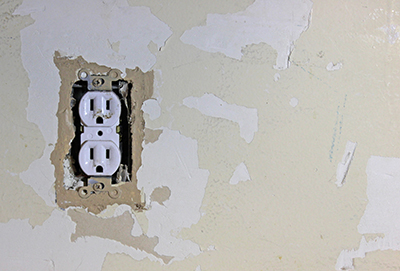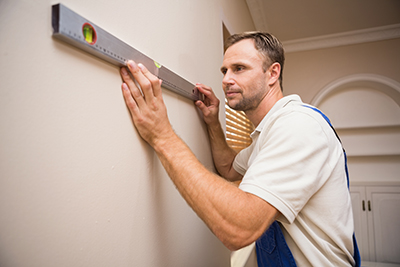Useful Drywall installation tips


Drywall installation is generally an easy task, provided you know the intricate details involved in achieving the right finish. The joint finish or joint taping or mudding, as it is commonly referred to, is the part that takes up a great deal of time in the installation. Here are some tips on the right finishing techniques and other factors that help in a proper installation.
 The butt joint formed when the short and long edge of a drywall meet is the most difficult part to finish in a drywall. The compound and tape used for sealing the butt joint creates a visible and small bump in the ceiling or wall that may require drywall repair. Though butt joints cannot be avoided, they can be minimized. Using long sheets of drywall, when it is installed horizontally is a way to minimize the butt joint formation. However, if the joints are present ensure that they are staggered so a long vertical bump from bottom to top is avoided.
The butt joint formed when the short and long edge of a drywall meet is the most difficult part to finish in a drywall. The compound and tape used for sealing the butt joint creates a visible and small bump in the ceiling or wall that may require drywall repair. Though butt joints cannot be avoided, they can be minimized. Using long sheets of drywall, when it is installed horizontally is a way to minimize the butt joint formation. However, if the joints are present ensure that they are staggered so a long vertical bump from bottom to top is avoided.
Longer sheets
Longer sheets bring down the joints including butt joints. For instance, in a 20 feet long wall you need four 5 foot of drywall or just two sheets of 10 foot length drywall. With the 10-foot drywall, only a single butt joint is present, while the other option will result in four butt joints. When you continue this throughout the entire space, the installation will be faster and save you hassles. While it is difficult to handle a long drywall sheet, there are supply stores that can deliver the desired length right at your doorstep.
Horizontal installation
Having the long drywall edge at right angles to studs gives a strong wall and leaves fewer joints - provided you use the lengthy sheets. For walls that are of four feet width or less, a vertical drywall hanging will avoid a joint, while in a wall, that is 8 feet or higher using a 54-inch sheet width will reduce the joints.
Proper support for edges
Most often the edges of drywall are not adequately supported leading to difficulty in fastening the edge. To prevent this, a minimum of one-inch drywall should be exposed in the corner region. Blocking should be nailed with the wall’s top plate in the framing stage. If it is not done, then screws need to be driven into blocking region at a particular angle from beneath.
Special Wall Anchors
Special types of anchors will be needed in case it is impossible to screw into the wall studs. Plastic sleeves for moderate and light loads can be used. For heavy loads, toggles and expansion bolts can be used for better grip.
Painting on drywall
When the scratches or nicks are repaired with joint compound or by spackling, the surface needs to be sanded and primer application done on it to get a smooth finish with the surrounding wall. While joint compound is used for large area coverage, spackle is used for filling spots. A primer is important, as without it the area repaired will absorb several paint coats.
As you can see, there are several considerations, when you install a drywall. For a top quality finish for your interior, using drywall repair Commerce is the best option all around.
Drywall Repair Commerce, 323-404-9009, South Eastern Avenue, Commerce, California, 90040, https://www.drywallrepaircommerce.com/
We perform our services through a network of independently owned and operated affiliates.